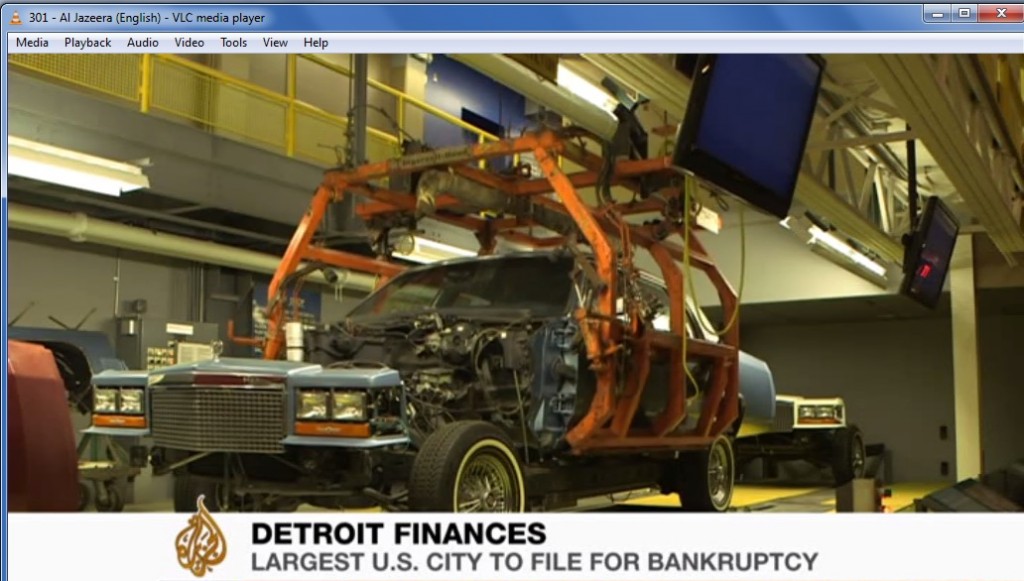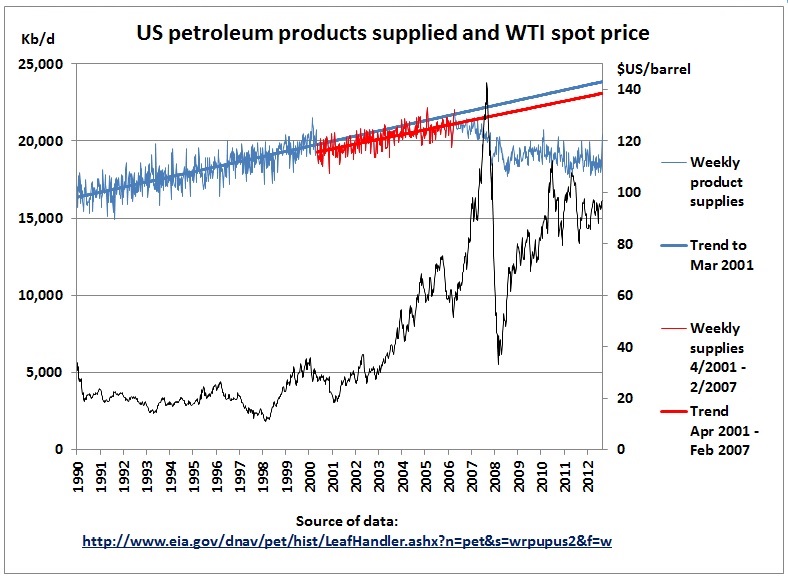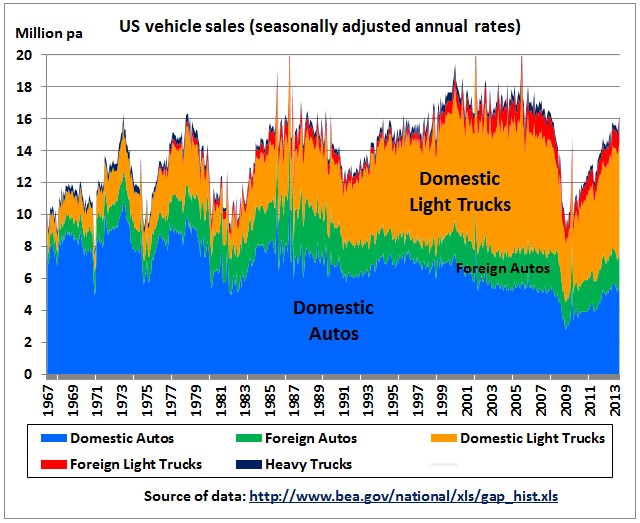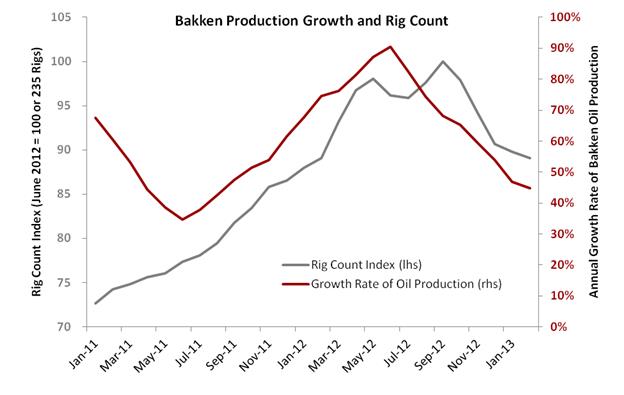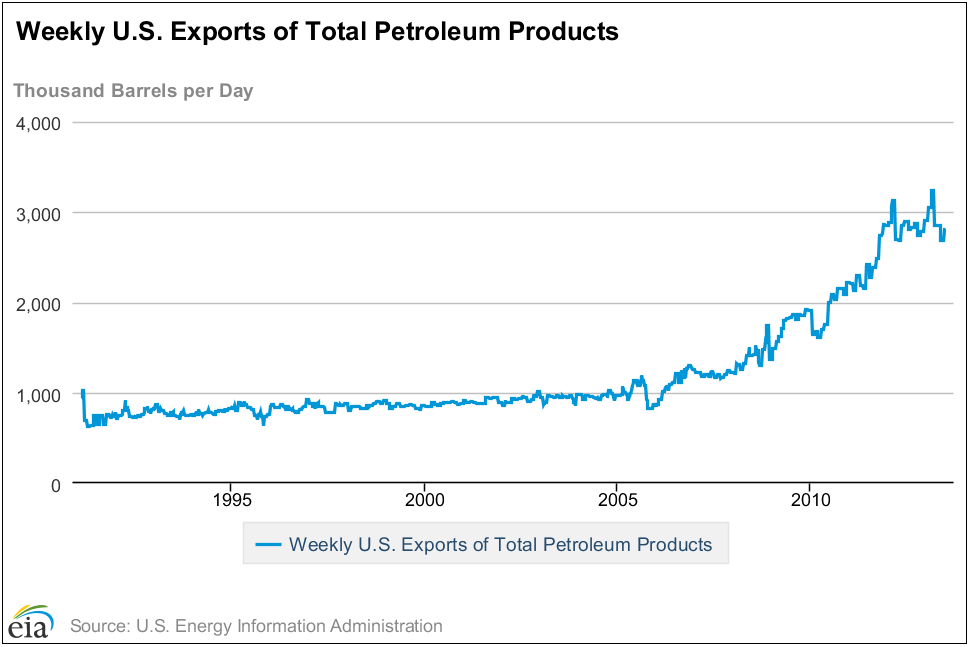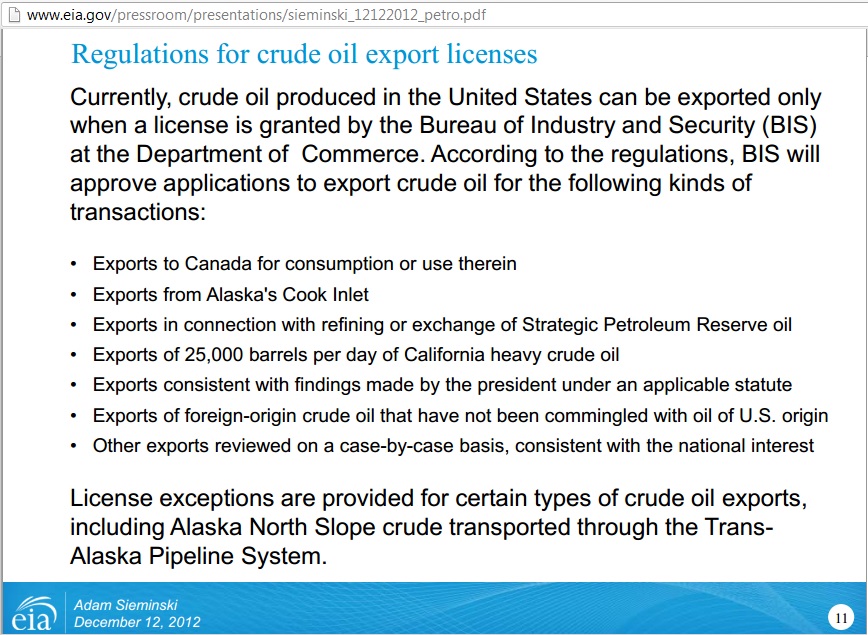Detroit’s Motown legacy has put the spotlight on the vulnerability of the American car culture. Despite an oil shale boom and years of money printing US oil demand has hit a wall. Expenditure for oil as a percentage of GDP exceeded a critical threshold of 4% pa impacting on oil demand, vehicle kms traveled, the size of the car fleet and car sales.
18/7/2013 Detroit seeks bankruptcy, facing debts of US$ 18 billion
http://www.aljazeera.com/news/americas/2013/07/2013718221123289215.html
DETROIT — Detroit, the cradle of America’s automobile industry and once the nation’s fourth-most-populous city, has filed for bankruptcy, an official said Thursday afternoon, the largest American city ever to take such a course.
http://www.nytimes.com/2013/07/19/us/detroit-files-for-bankruptcy.html?pagewanted=all&_r=0
http://www.detroitgasprices.com/retail_price_chart.aspx
Let’s have a look what is going on. The following graph is straight from the EIA website:
http://www.eia.gov/dnav/pet/hist/LeafHandler.ashx?n=PET&s=WRPUPUS2&f=W
Obviously, supply – both from local production and imports – and therefore demand – has peaked. Some trend lines make this clear:
Data from: http://www.eia.gov/dnav/pet/hist/LeafHandler.ashx?n=pet&s=wrpupus2&f=w
In an undisturbed US economy, that is with an oil price between 20-30 US$, the growth rate in petroleum product consumption was around 2% to 1.7% pa (1990 – March 2001). A recession emerged in early 2001 http://www.sjsu.edu/faculty/watkins/rec2001.htm and then 9/11 hit. Consumption resumed, albeit at a lower level, on a similar growth path of 1.6% to 1.5% pa (red curve). When oil prices doubled at around US$ 60 a barrel (gas prices breaking the US$ 3 a gallon mark), the growth path was ended and consumption started to decline.
http://www.fhwa.dot.gov/policyinformation/travel_monitoring/13febtvt/figure1.cfm
That is the impact of high oil prices in the US. They call it demand peak but this is not a voluntary peak. It’s a peak of vehicle km traveled, as shown in this graph of the US Department of Transportation. The travel peak happened in 2008 at around 3.026 trillion vehicle miles.
Decades of expanding the vehicle fleet has also stalled although population is still growing at around 1% pa (from 160 million in 1950 to 320 million in 2013):
We see that the road based vehicle fleet in the US has peaked, in 2008.
Data from: http://www.bea.gov/national/xls/gap_hist.xls
Vehicle sales are very sensitive to the state of the economy. We see dips during the 1st oil crisis (1973) and the 2nd oil crisis (1979) when high inflation and high interest rates killed the economy. The next dip was the aftermath of the 1987 stock market crash. The overall vehicle sales peak was in 2000, followed by a slightly lower 2nd peak in 2005. Sales plummeted in 2009 as a result of the financial crisis which was triggered by the 3rd oil crisis. Since then sales have increased again to 2008 levels.
Obviously the Federal Reserve has learned from the negative impact of high interest rates during the 1st and 2nd oil crisis by embarking on a massive QE program.
On 22nd May 2013 Chairman Bernanke explains in a Congressional hearing: “Generally I think that low interest rates are helping the households….making it easier to buy homes ….. have supported automobile purchases and manufacturing….This is very much a main street policy. That is certainly our intention”
http://www.bloomberg.com/video/bernanke-on-low-interest-rates-housing-uUIFmzpCQ5umDQo39E6MPw.html
The full transcript of Bernanke’s address to the Congress can be found here:
http://www.federalreserve.gov/newsevents/testimony/bernanke20130522a.htm
But is money printing a solution to globally limited oil supplies? A good explanation for what has happened can be found in a 2011 slide show “Oil in the economy” from Stephen Kopits, Managing Director of Douglas-Westwood, an international oil analysis firm based in NY.
http://www.frbsf.org/economic-research/files/Kopits_Oil-and-the-Economy.pdf
In a more recent interview Steven Kopits explains (extracts):
May 1st 2013
Kopits: Peak oil does not occur when we run out of oil. Peak oil occurs when the marginal consumer is no longer willing to pay the cost of extracting and processing the marginal barrel of oil. And we can actually calculate what the related numbers are.
To begin with, we refer to the price a nation’s oil consumers are willing to pay as its “carrying capacity.” For the US, carrying capacity is about $95-100 Brent [per-barrel oil price in London]. If the oil price is above this level, oil consumption will decline—which is exactly what we see and what we predicted four years ago. But carrying capacity is not a static number. It changes over time, specifically, with three things: GDP growth, efficiency gains in the use of oil, and dollar inflation.
For China, by the way, we estimate the carrying capacity at around $115-120 / barrel Brent. So oil consumption will increase in China at $115 Brent, but fall in the advanced economies—exactly the pattern we’ve seen in the last few years.
On the supply side, the global oil supply and related costs are determined primarily by two factors: geology and technology. Geology is driving costs by forcing us to frontier areas like ultra deepwater and the Arctic. Technology, on the other hand, is allowing us to access new resources like shale gas and shale / tight oil. So, for any given oil price, depletion will always drive us to more difficult geologies and thus higher costs. Technology, on the other hand, can move us back to easier geologies and lower costs. Hydrofracking of shale oil and gas wells, for example, has done just that.
The marginal consumer banged into the price of the marginal barrel, on a static basis, somewhere in 2011 at about $110-115 Brent. And then, oil prices essentially stopped rising. Those of us who use supply-constrained forecasting weren’t surprised. It’s entirely consistent with the historical record. But I think many in the oil business still thought, somehow, that oil prices would continue to rise as they had done in the 2000s. After all, the oil supply is widely acknowledged as constrained, even by those who are not necessarily believers in peak oil. So why wouldn’t prices continue to rise if we’re supply short? Well, because there was a price at which the marginal global consumer would rather reduce oil consumption than pay more. And that price is around $110-115 Brent, and from here on in, we should expect that number to rise only with the purchasing power of the marginal consumer.
On the other hand, the cost of extraction and production has continued to increase. Last year costs increased somewhere between 10% and 13%, depending on who you talk to. Exxon’s costs rose about 7% in excess of its increase in revenues, which were also falling. And Petrobras’ costs were rising 10% to 13% faster than its revenues. So what we can see is that in the contest between technology and geology, in recent times geology has been winning. Oil has become more expensive to extract.
Even when we look at the “good-news” shale / tight oil, some investment is slowing. In the Bakken, for example, the rig count actually peaked in September of 2012, and the year-over-year production growth rate peaked at 90% three months earlier in June. Today the growth rate, while still impressive, is down to about 40%. If that trend continues, we could see single-digit growth in the Bakken much sooner than most think.
http://peak-oil.org/2013/05/interview-with-steven-kopits/
Quantitative Easing has of course allowed US shale oil production to increase. The oil and gas industry has now convinced the public of an energy revolution in which the US will become an energy exporter soon. But let’s have a look at statistics from the EIA website whether this claim is justified as far as oil is concerned:
http://www.eia.gov/dnav/pet/pet_move_wkly_dc_nus-z00_mbblpd_w.htm
Therefore, net exports of petroleum products are around 1 mb/d. So let’s put that in the above graph of total products supplied:
Data from here: http://www.eia.gov/dnav/pet/pet_move_wkly_dc_nus-z00_mbblpd_w.htm
Yes, net product imports have turned into net product exports but the above graph shows how small the quantities are in comparison to the total products demand. And how about crude oil exports?
http://www.eia.gov/pressroom/presentations/sieminski_12122012_petro.pdf
So the US would have a long way to go to rival Saudi Arabia, while the media already reports:
“Look, we could be that swing producer. We have the capability here in the US, in North America, to make OPEC NOPEC”.
http://www.bloomberg.com/news/2013-06-18/americans-exporting-more-oil-first-time-since-70s.html
A swing producer, by definition, can increase production very quickly when there is a physical supply crisis in oil markets. Neither syncrude from Canadian tar sands (mining operation) nor US shale oil wells (limited by number of drilling rigs) can do that.
Conclusion
The Federal Reserve’s QE has artificially propped up the US addiction to oil and cars. But given the steep decline rates in shale oil wells, ultimately geology will win.
